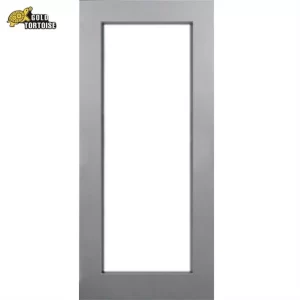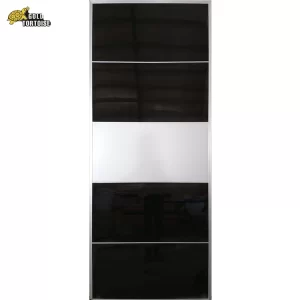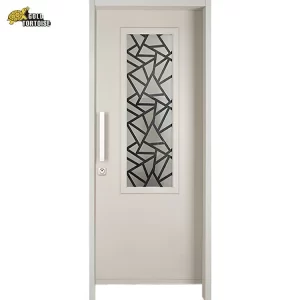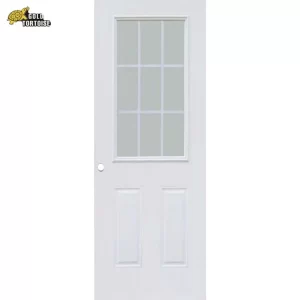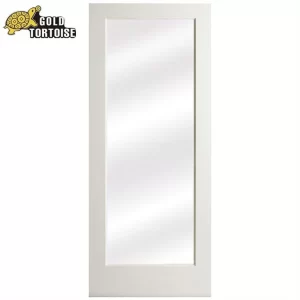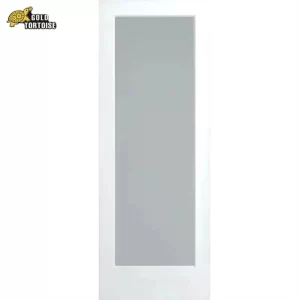Introduction: The Critical Role of Fire-Rated Doors
In an era where building safety regulations are becoming increasingly stringent, UL-certified fire-rated doors have emerged as indispensable components in architectural design. These specialized doors do more than just separate spaces—they serve as engineered fire barriers, meticulously tested to contain flames, smoke, and toxic gases during emergencies. Whether in a high-rise apartment, a bustling hospital, or an industrial warehouse, these doors provide tested, certified protection that can mean the difference between a contained incident and a catastrophic disaster.
What is a UL-Certified Fire-Rated Door?
A UL-certified fire-rated door is a specially designed door that has undergone rigorous testing by Underwriters Laboratories (UL), a globally recognized safety certification organization. These doors are rated based on their ability to resist fire for a specified duration—typically 20, 45, 60, 90, or even 180 minutes—depending on building codes and safety requirements.
Understanding UL Certification: The Gold Standard in Fire Safety
Underwriters Laboratories (UL) is one of the most trusted independent safety science companies globally, with over a century of experience in testing and certification. A UL-certified fire-rated door undergoes exhaustive evaluations, including:
-
Fire Endurance Testing – The door is exposed to temperatures exceeding 1,800°F (982°C) to verify its ability to withstand fire for its rated duration (e.g., 60, 90, or 180 minutes).
-
Hose Stream Test – After fire exposure, the door is blasted with high-pressure water to ensure it remains intact and functional.
-
Smoke Leakage Testing – Since smoke inhalation causes 70% of fire-related deaths, UL verifies that the door effectively restricts smoke passage.
This rigorous process ensures compliance with NFPA 80, International Building Code (IBC), and local fire safety regulations, making UL-certified doors the preferred choice for architects, contractors, and safety inspectors.
How Fire-Rated Doors Work: Materials and Design Innovations
Modern UL-certified fire doors incorporate advanced materials and engineering to maximize protection:
✔ Steel & Mineral Cores – Many fire doors feature galvanized steel frames with fire-resistant cores (gypsum, vermiculite, or ceramic fibers) that expand under heat, sealing gaps.
✔ Intumescent Seals – These seals swell when exposed to heat, automatically closing off gaps around the door edges to block flames and smoke.
✔ Fire-Rated Glass Options – For visibility without compromising safety, some doors integrate wire-reinforced or ceramic glass rated for up to 90 minutes of fire resistance.
✔ Self-Closing Mechanisms – Equipped with automatic door closers, these doors ensure they shut during a fire, maintaining compartmentalization.
Where Are They Needed?
Fire-rated doors are essential in:
-
Commercial buildings (offices, hospitals, schools)
-
Industrial facilities (warehouses, factories)
-
Residential high-rises (apartments, condominiums)
-
Emergency exits & stairwells (to maintain safe evacuation routes)
Why UL Certification Matters More Than Ever
With increasing legal liabilities and insurance requirements, installing non-certified fire doors can result in failed inspections, fines, or even litigation if a fire occurs. UL certification provides:
✅ Proof of Compliance – Meets international building codes and insurance standards.
✅ Third-Party Validation – Eliminates guesswork—UL’s testing is unbiased and rigorous.
✅ Long-Term Reliability – Certified doors are built to last, reducing replacement costs.
Case Study: Real-World Fire Door Performance
A 2022 incident in a Chicago high-rise demonstrated the effectiveness of UL-certified doors. When a kitchen fire broke out, the building’s 90-minute fire-rated doors successfully contained the flames, allowing safe evacuation of 300+ residents and preventing millions in property damage. Fire marshals later confirmed that non-certified doors in older sections contributed to faster fire spread, highlighting the importance of proper certification.
Conclusion: Invest in Certified Protection
A UL-certified fire-rated door is not just a building code requirement—it’s a critical investment in life safety. In fires, every second counts, and certified doors provide tested, reliable protection that can save lives and minimize destruction.
For architects, builders, and property managers: Don’t compromise on safety. Specify UL-certified fire-rated doors—because when disaster strikes, certification matters.
Industry Insight: Trends and Challenges in the Global Fire Door Market in 2025
April 5, 2025 Driven by factors such as enhanced safety awareness, technological innovation, and policies and regulations, the global fire door market is undergoing profound
The Application Advantages and Purchase Guide for Steel Doors in Rental Apartments and School Dormitories [2025 Updated Edition]
The Application Advantages and Purchase Guide for Steel Doors in Rental Apartments and School Dormitories [2025 Updated Edition] I. Core Advantages: Why Steel Doors Are
What are the advantages of the pivot doors?
The Introduction and Advantages of the pivot Door. The pivot door is a remarkable architectural and functional innovation that has gained increasing popularity in modern
UL 10B And UL 10C Standard for Fire Tests of Door Assemblies
UL 10B – Fire Tests of Door Assemblies: A Detailed Overview Purpose: Evaluating the Fire Resistance and Structural Integrity of Door Systems The primary purpose of the
UL-certified fire-rated door – a sturdy defense ensuring safety
Introduction: The Critical Role of Fire-Rated Doors In an era where building safety regulations are becoming increasingly stringent, UL-certified fire-rated doors have emerged as indispensable components in
How Do You Measure A Glass Door Insert?
When it comes to home improvement, one of the most impactful changes you can make is to install a glass door insert. Not only does

